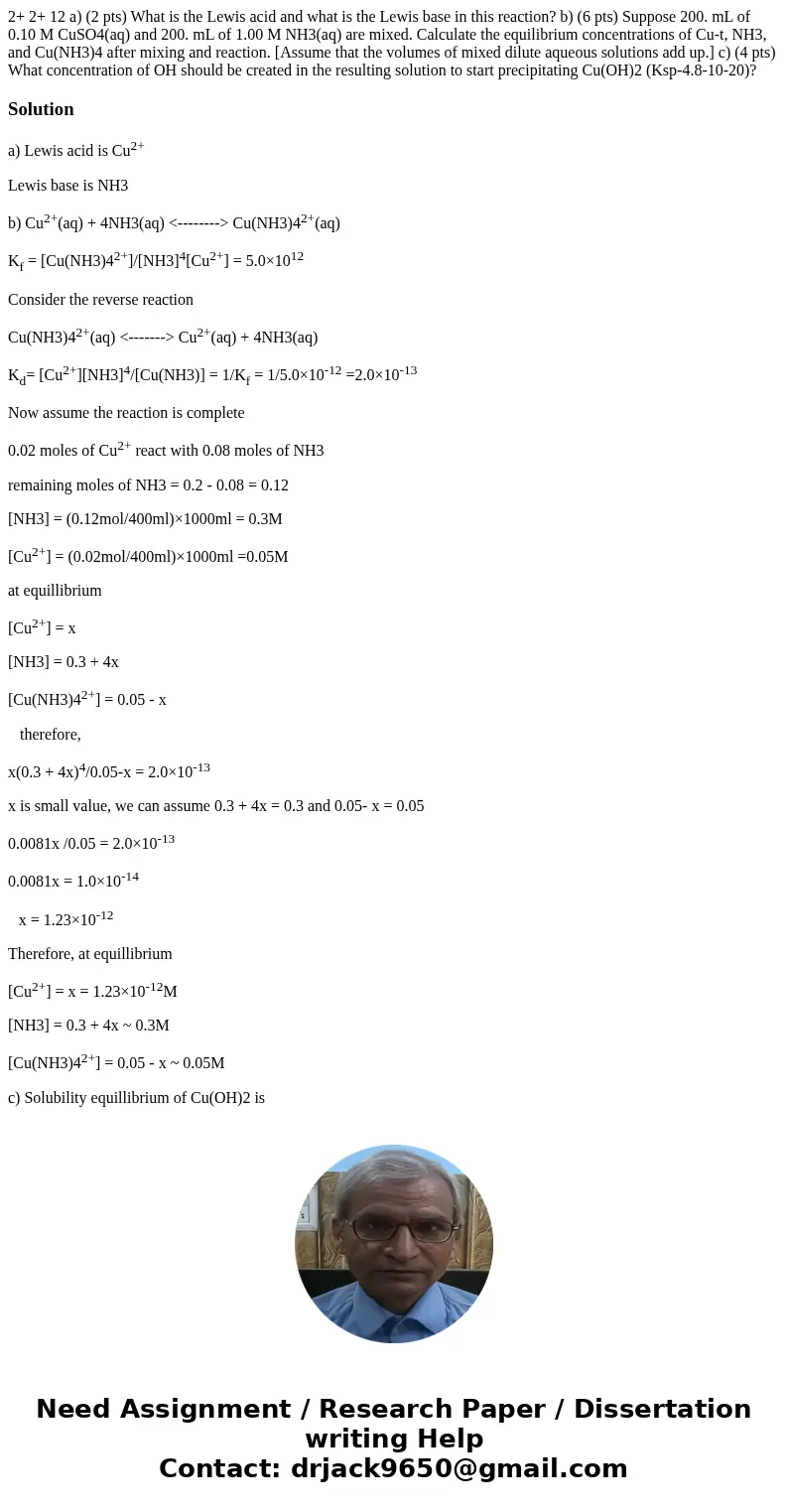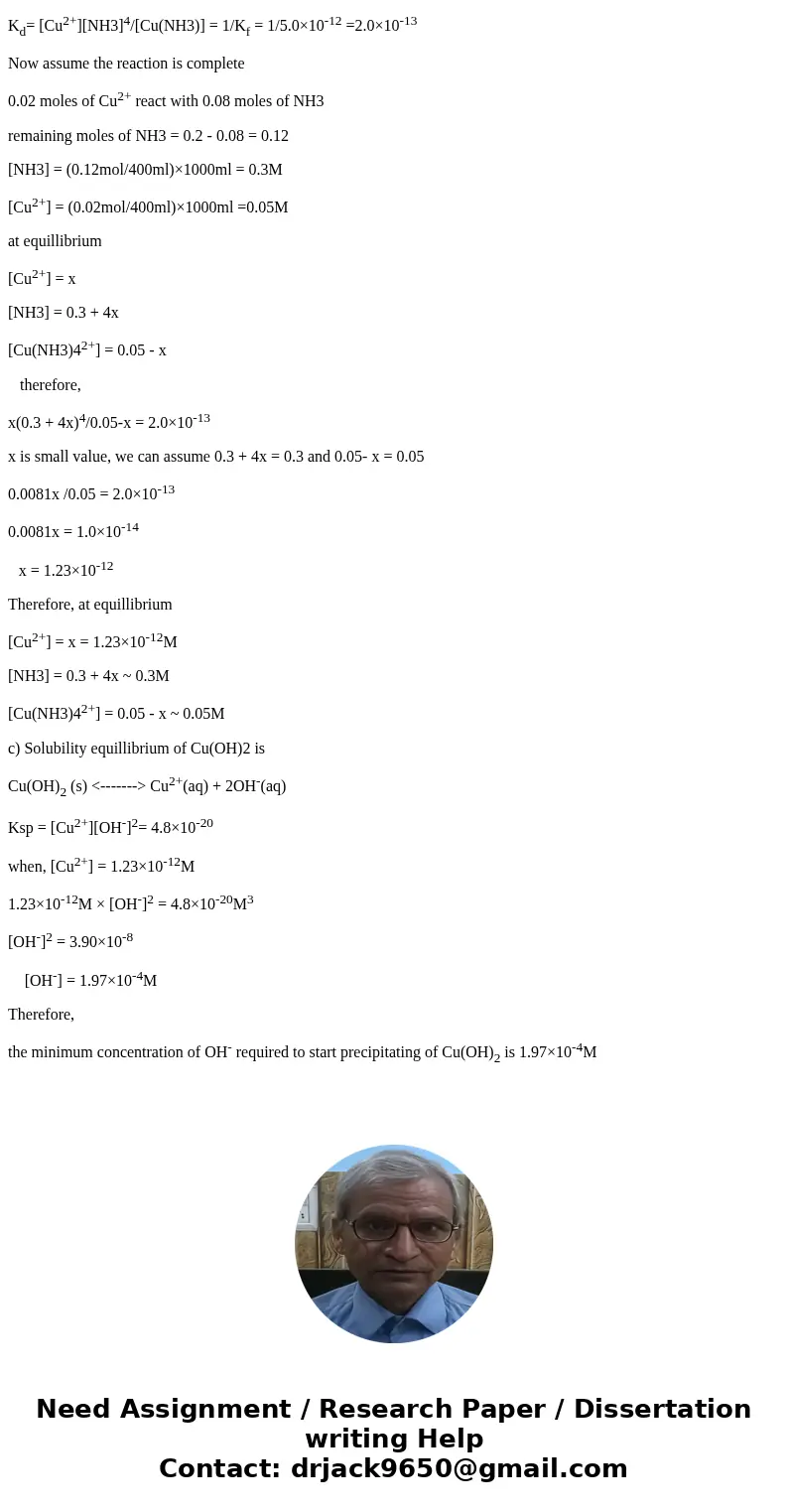2 2 12 a 2 pts What is the Lewis acid and what is the Lewis
Solution
a) Lewis acid is Cu2+
Lewis base is NH3
b) Cu2+(aq) + 4NH3(aq) <--------> Cu(NH3)42+(aq)
Kf = [Cu(NH3)42+]/[NH3]4[Cu2+] = 5.0×1012
Consider the reverse reaction
Cu(NH3)42+(aq) <-------> Cu2+(aq) + 4NH3(aq)
Kd= [Cu2+][NH3]4/[Cu(NH3)] = 1/Kf = 1/5.0×10-12 =2.0×10-13
Now assume the reaction is complete
0.02 moles of Cu2+ react with 0.08 moles of NH3
remaining moles of NH3 = 0.2 - 0.08 = 0.12
[NH3] = (0.12mol/400ml)×1000ml = 0.3M
[Cu2+] = (0.02mol/400ml)×1000ml =0.05M
at equillibrium
[Cu2+] = x
[NH3] = 0.3 + 4x
[Cu(NH3)42+] = 0.05 - x
therefore,
x(0.3 + 4x)4/0.05-x = 2.0×10-13
x is small value, we can assume 0.3 + 4x = 0.3 and 0.05- x = 0.05
0.0081x /0.05 = 2.0×10-13
0.0081x = 1.0×10-14
x = 1.23×10-12
Therefore, at equillibrium
[Cu2+] = x = 1.23×10-12M
[NH3] = 0.3 + 4x ~ 0.3M
[Cu(NH3)42+] = 0.05 - x ~ 0.05M
c) Solubility equillibrium of Cu(OH)2 is
Cu(OH)2 (s) <-------> Cu2+(aq) + 2OH-(aq)
Ksp = [Cu2+][OH-]2= 4.8×10-20
when, [Cu2+] = 1.23×10-12M
1.23×10-12M × [OH-]2 = 4.8×10-20M3
[OH-]2 = 3.90×10-8
[OH-] = 1.97×10-4M
Therefore,
the minimum concentration of OH- required to start precipitating of Cu(OH)2 is 1.97×10-4M


 Homework Sourse
Homework Sourse